
views
- You can update your graphics drivers by performing a routine system update on both Windows and Mac.
- On Windows, you can manually update your graphics drivers in Device Manager. Expand "Display adapters," right-click the driver, and select "Update driver."
- You can also update NVIDIA, AMD, and Intel graphics drivers using their respective apps.
Updating Automatically in Windows

Click on the Windows Start button Windows Start. It's the icon that has the Windows logo in the taskbar at the bottom of the screen. This displays the Start menu. On Windows, you can update all your hardware drivers—including your graphics driver—by performing a routine system update.

Type update. This displays a list of options related to system updates.
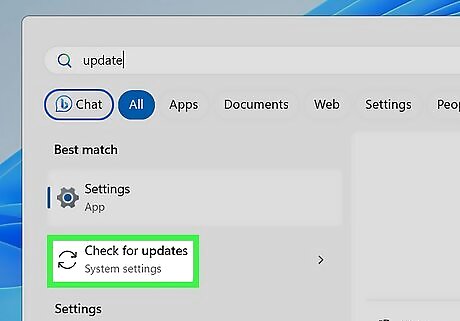
Click on Check for updates. This opens the Windows Update menu in the Settings menu. Windows will check if there are any system updates available.
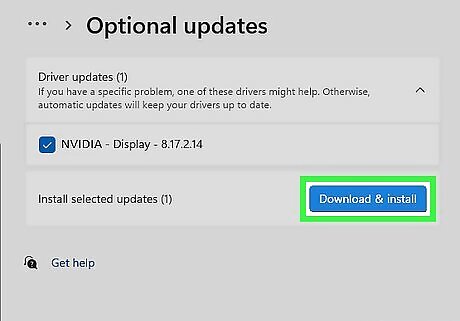
Click Download and Install. If any system updates are available, Windows will display the option to download and install all system updates. Allow several minutes for the updates to download and install.
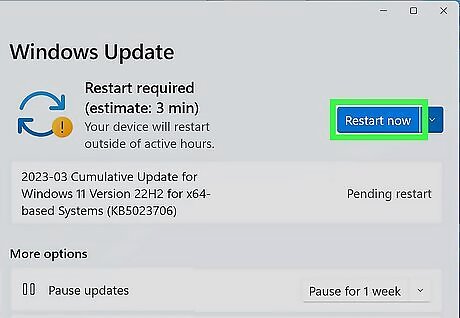
Click Restart Now. Many system updates require a system restart. If you are working on anything, be sure to save your progress. Then click Restart Now. Your system will restart. All your drivers are now up-to-date.
Using Device Manager in Windows

Right-click the Windows Start menu. This displays a context menu with a variety of system applications. In addition to automatically updating Windows, you can update your graphics drivers manually using Device Manager.
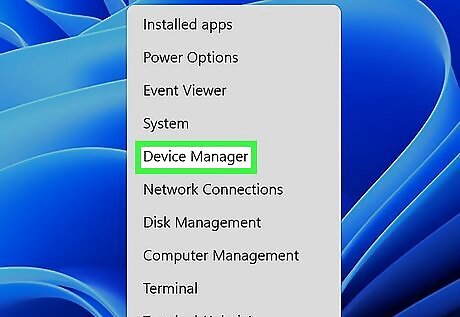
Click Device Manager. It's in the context menu that appears when you right-click the Windows Start button. This opens Device Manager.
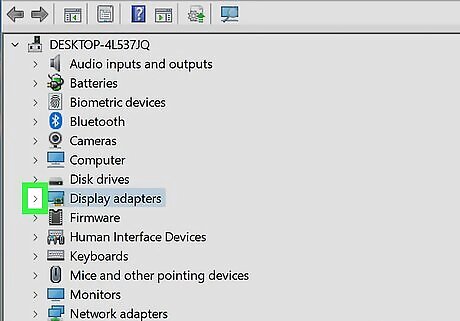
Click Android 7 Expand Right next to "Display adapters." Click the arrow pointing right next to "Display adapters." This displays a list of all your graphics drivers. You may have more than one.
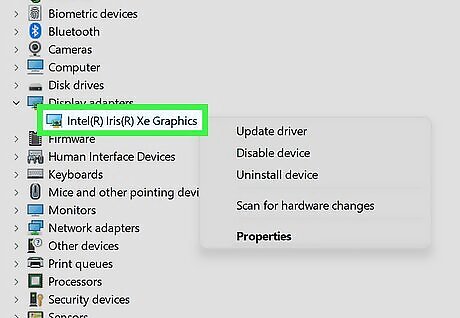
Right-click your graphics driver(s). This displays a context menu for that driver.
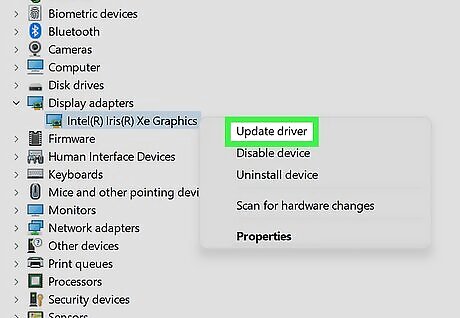
Click Update Driver. This displays two options for updating your driver.
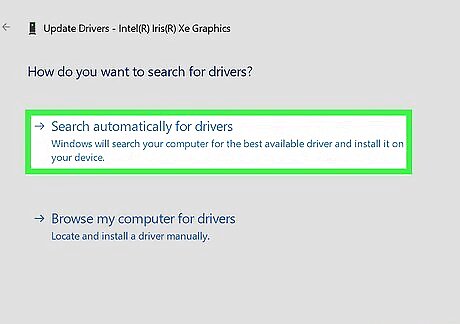
Click Search automatically for drivers. This will search for an available download. The device manager will list any available updates for the driver. If Windows can't find an update for the driver on the internet, you can download the driver update from the manufacturer's website for your graphics card. Click Browse my computer for drivers in Device Manager instead of "Search Automatically." Select the folder containing your downloaded drivers and click Ok.
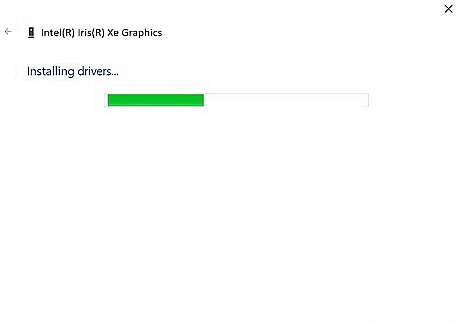
Click Update Drivers. This will begin updating the driver automatically. Your system may need to restart once the update is complete. Alternatively, you can click Uninstall Driver and then restart your computer. This will force Windows to search for and reinstall the latest drivers upon restarting.
Updating NVIDIA Graphics Drivers

Open the NVIDIA GeForce Experience app. If you have an NVIDIA graphics card, you can use the NVIDIA GeForce Experience app to update your drivers. It has an icon resembling a green and black spiral shaped like an eye. If you do not have the NVIDIA GeForce Experience app, download it from here. You may need to log into the app. To do so, sign in with the username and password associated with your NVIDIA account. If you do not have an NVIDIA account, you can click one of the options to create an account using your Facebook, Google, or other accounts.
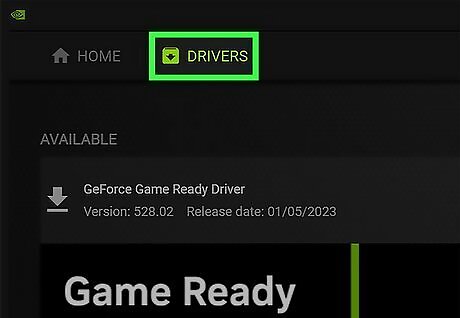
Click Drivers. It's the second tab at the top of the GeForce Experience app.
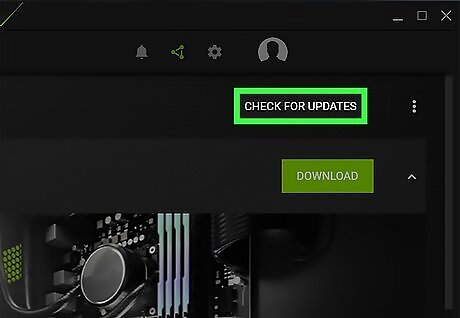
Click Check for Updates. It's in the upper-right corner. This will search for available updates and drivers.

Click Download next to the updates you want to install. It's the green button on the right side. This begins downloading the driver update.
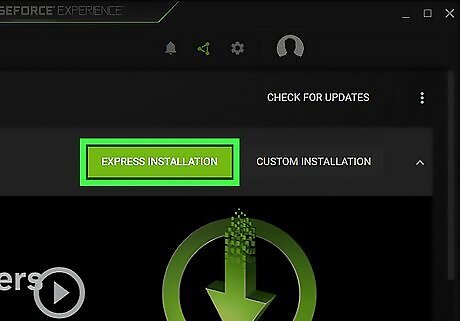
Click Exppress Installation. The green button appears in the upper-right corner once the drivers are ready to install. This performs a quick installation of the recommended drivers. Alternatively, you can click Custom Installation and select which components you want to install.

Click Close. You will be informed once the update is complete. Click Close to close the Window.
Updating AMD Graphics Drivers

Download and install AMD auto-detect and install the tool. If you have an AMD graphics card, you can use the AMD auto-detect and install tool to automatically check your system and install the latest graphics drivers automatically. Use the following steps to download and install the AMD auto-detect and install tool: Go to https://www.amd.com/en/support in a web browser. Click DOWNLOAD WINDOWS DRIVERS. Open the installation file in your Downloads folder. Choose an installation location and click Install.
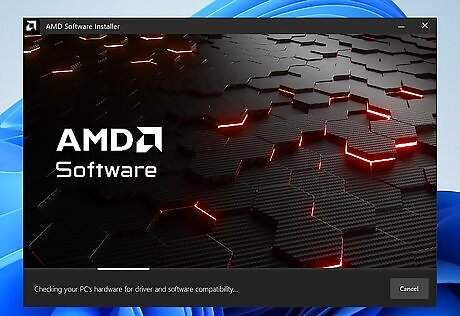
Open the AMD auto-detect and install the tool. The auto-detect and install tool should launch automatically after the installation is complete. If it does not, you can open it by clicking the Windows Start menu and typing "AMD." Click the auto-detect and install tool. The application will automatically start scanning your system and checking for the latest updates to your drivers. Alternatively, you can use the AMD Software: Adrenaline Edition app. Open the app and click Check for Updates in the upper-right corner. If an update is found, it will be installed automatically.
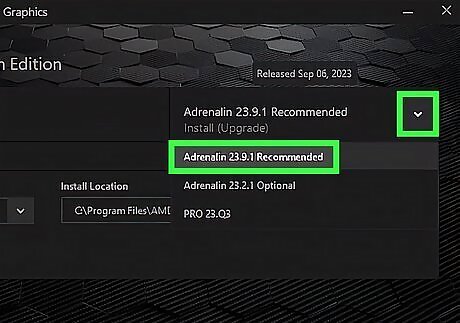
Select the recommended installation and click Next. You can use the menu on the right to select Recommended for the latest stable drivers. Alternatively, you can select Optional for the latest updates or PRO if you use your AMD graphics card for commercial uses.
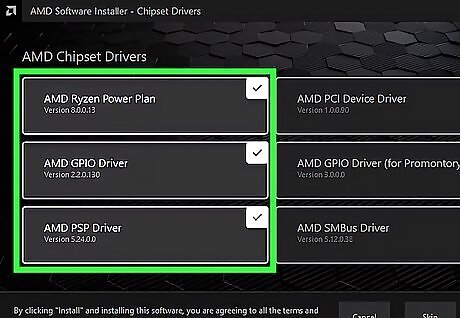
Select the chipset drivers you want to install. The AMD auto-detect tool will display various chipset drivers that have an available update. Check the boxes next to the drivers you want to install. AMD recommends you leave all available updates checked.
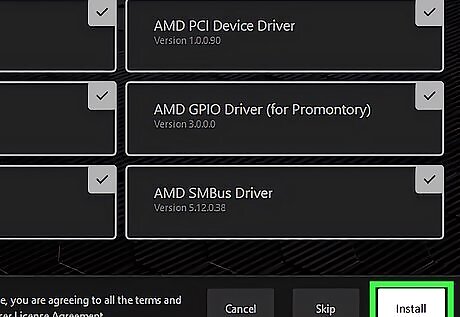
Click Install. It's in the lower-right corner. This will install all available updates.
Updating Intel Graphics Drivers
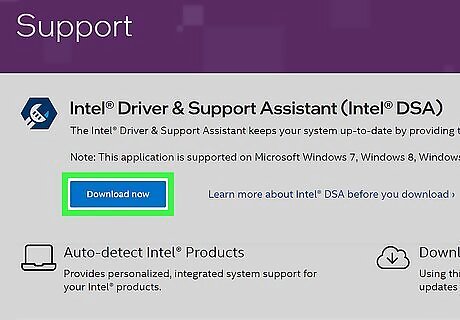
Download and install the Intel Driver & Support Assistant. You can easily keep your Intel drivers up-to-date using the Intel Driver & Support Assistant. Use the following steps to download and install it: Go to https://www.intel.com/content/www/us/en/support/detect.html in a web browser. Click Download Now at the top of the page. Open the installation file in your Downloads folder. Agree to the license terms and click Install. Click Accept
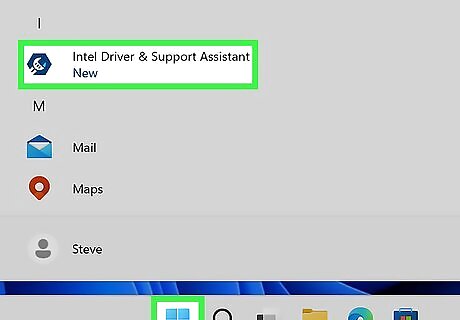
Open the Intel Driver Support & Assistant. This will scan your system and display available updates in a web browser. Alternatively, you will see a notification telling you what drivers need to be updated after the installation is complete.

Click Download All. It's the blue button at the top of the list of available driver downloads. This will begin downloading the latest drivers.
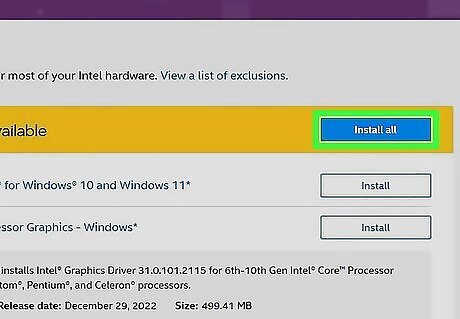
Click Install all. It's the blue button at the top of the page. This begins installing all available driver updates.
Updating Graphics Drivers on Mac
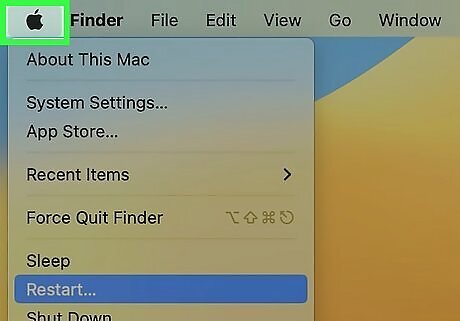
Click the Apple icon Mac Apple. It's in the menu bar in the upper-left corner. On a Mac, there is no option to install graphics driver updates manually. Instead, you can update your graphics driver by perform a routine system update.
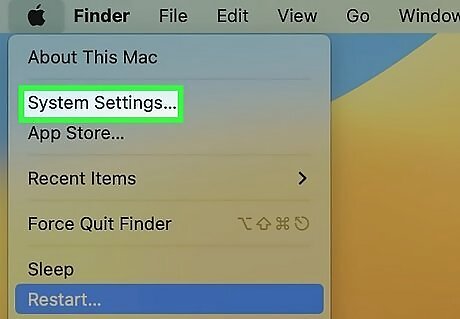
Click System Settings or System Preferences. If you are using the latest macOS versions, click System Settings in the Apple menu. If you are using an older macOS version, click System Preferences instead.
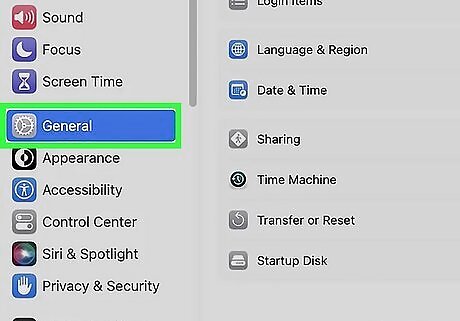
Click General (newer versions of macOS only). If you are using a newer version of macOS, click General at the top of the menu bar on the left.
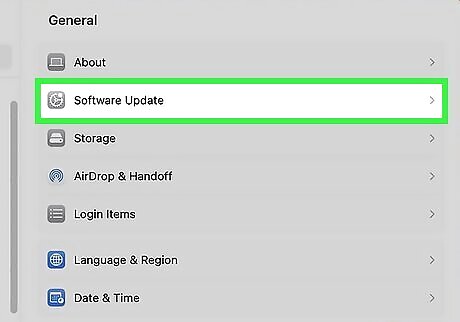
Click Software Update. On newer macOS versions, it will be at the top of the menu on the right. On older versions of macOS, it will be one of the icons in the menu.
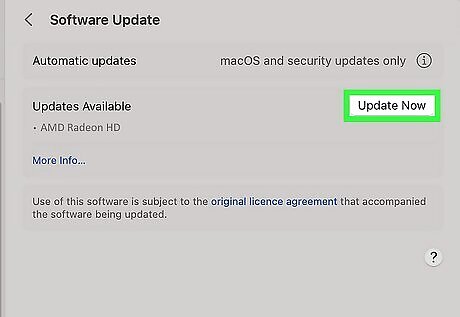
Click Update Now. This will begin updating your system software, including your graphics drivers.



















Comments
0 comment